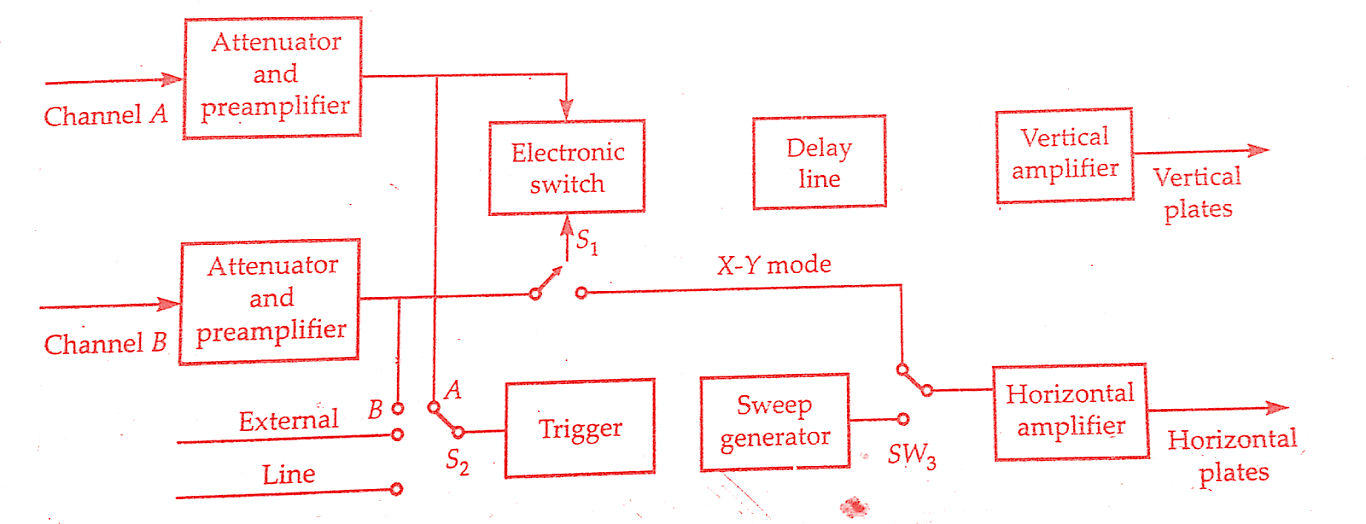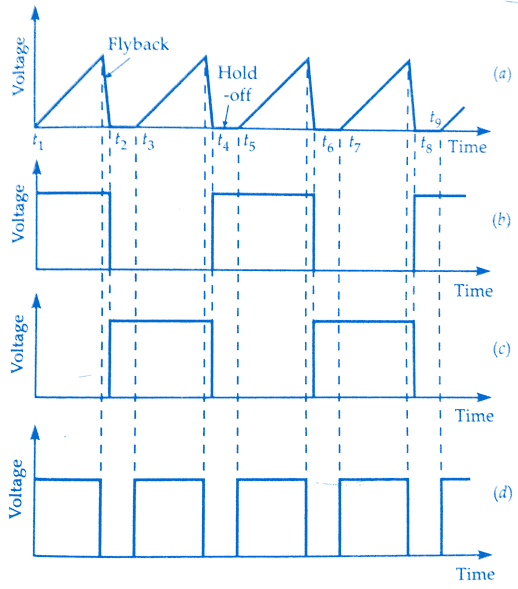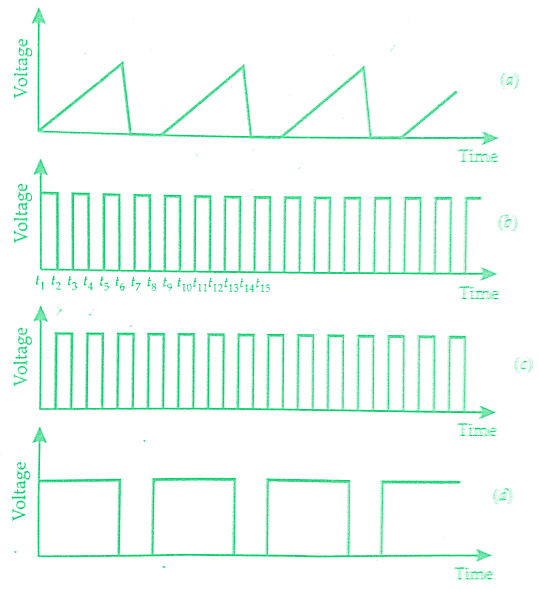Dual Trace Oscilloscope Working Principle:
Oscilloscopes can have multiple inputs and display facilities. Two inputs are the most common, although four and eight inputs are available for special application.
There are two primary types:
Single beam which can then be converted into several traces, and dual beam, which may also be converted into a further number of traces.
Two input oscilloscopes are described, dual trace and dual beam. Here we are going to discuss dual trace oscilloscope whose working and construction is completely different from dual beam oscilloscope.
The figure below shows the construction & working dual trace oscilloscope. There are two separate vertical input channels, A and B, and these use separate attenuator and preamplifier stages. Therefore the amplitude of each input, as viewed on the oscilloscope, can be individually controlled. After preamplification, the two channels meet at an electronic switch. This has the ability to pass one channel at a time into the vertical amplifier, via the delay line.
Must Read:
- Comparison Between Cathode ray and Digital Storage Oscilloscopes
- Digital Storage Oscilloscope(DSO) Working Principle and its Operation
- Lissajous Patterns of CRO or Cathode ray oscilloscope
This textbook “Electrical and Electronics Measurements by S. Chand” is the best in industry. Grab it now for very less price.
Dual Trace Oscilloscope Block Diagram:
There are two common operating modes for the electronic switch, called alternate and chop, and these are selected from the instrument’s front panel. The alternate mode is illustrated in the figure below. In this the electronic switch alternates between channels A and B, letting each through for one cycle of the horizontal sweep.
The display is blanked during the fly back and hold-off periods, as in a conventional oscilloscope. Provided the sweep speed is much greater than the decay time of the CRT phosphor, the screen will show a stable display of both the waveform at channels A and B. The alternate mode cannot be used for displaying very low-frequency signals.
The chopped operating mode of the electronic switch is shown in the below figure waveforms of a dual trace oscilloscope operating in chopped mode. In this mode, the electronic switch free runs at a high frequency of the order of 100 kHz to 500 kHz. The result is that small segments from channels A and B are connected alternately to the vertical amplifier and displayed on the screen.
Provided the chopping rate is much faster than the horizontal sweep rate, the display will show a continuous line for each channel. If the sweep rate approaches the chopping rate then the individual segments will be visible, and the alternate mode should now be used.
This dual trace oscilloscope block diagram is similar to that of a single input oscilloscope. Switch S2 allows the circuit to be triggered on either the A or B channel waveforms, or on line frequency, or on an external signal. The horizontal amplifier can be fed from the sweep generator, or the B channel via switch Si.
This is the X-Y mode and the oscilloscope operates from channel A as the vertical signal and channel B as the horizontal signal, giving very accurate X-Y measurements. Several operating modes can be selected from the front panel for display, such as channel A only, channel B only, channels A and B as two traces; and signals A + B, A – B, B – A or -(A + B) as a single trace.
Conclusion:
Now here we have discussed working principle and block diagram of dual trace oscilloscope. You can download this article as pdf, ppt. In the next article, I am going to explain dual beam oscilloscope or double beam oscilloscope.
Comment below for any Queries.


